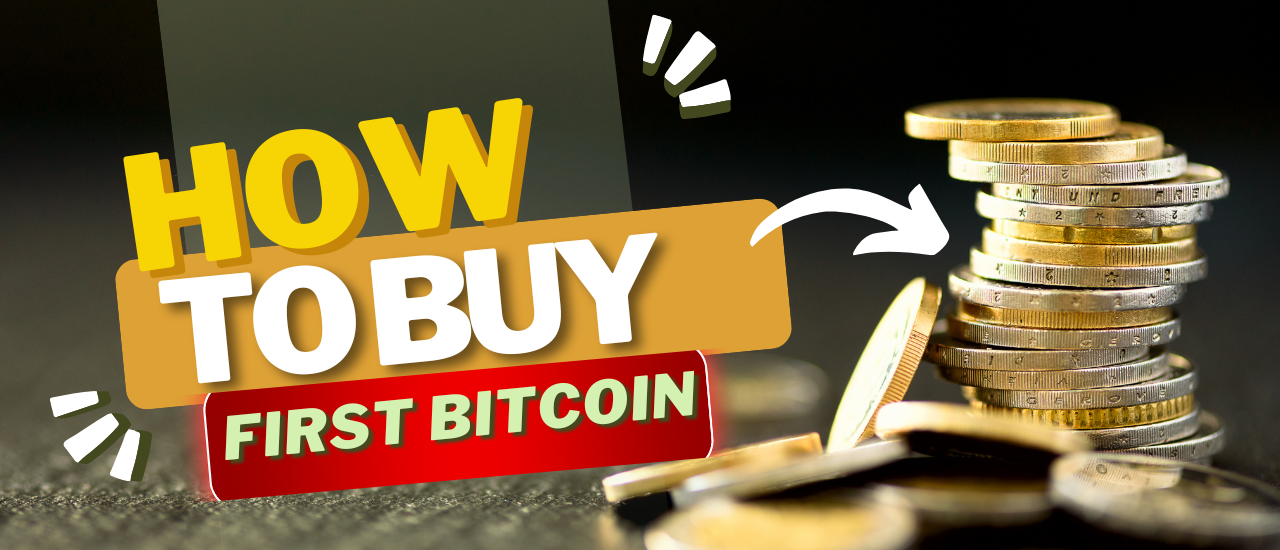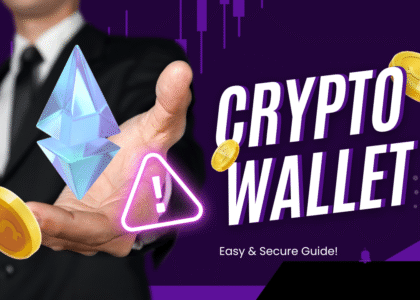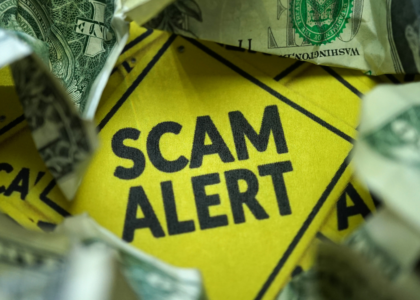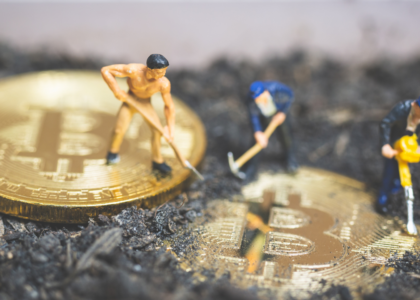Buying your first Bitcoin might seem overwhelming, but it’s easier than you think. As the world’s most well-known cryptocurrency, Bitcoin has gained massive popularity for its potential to grow in value and reshape how we think about money. Many first-time buyers are attracted to its unique features and the idea of diversifying their financial options. This guide will show you the steps to securely and confidently purchase your first Bitcoin, even if you’re just getting started. Understanding the basics of cryptocurrency is the first step in learning how to buy your first Bitcoin.
Understanding Bitcoin
Let’s start by understanding what Bitcoin is and why so many people are drawn to it. As one of the most talked-about innovations in modern finance, Bitcoin can seem a bit confusing at first. However, once you get the basics, it’s much simpler than you think. Researching different exchanges is essential when figuring out how to buy your first Bitcoin safely.
What is Bitcoin?

Photo by David McBee
Bitcoin is a digital form of currency that exists entirely online, meaning there’s no physical coin you can hold. It’s known as a cryptocurrency because it relies on cryptography to secure transactions. Unlike traditional money issued by central banks, Bitcoin is decentralized, operating without a middleman like a government or financial institution. Choosing a secure and user-friendly platform is crucial in the process of how to buy your first Bitcoin.
The key to how Bitcoin works is blockchain technology. Blockchain is a transparent ledger that records every single Bitcoin transaction. Think of it as an open spreadsheet that anyone can view, but no one can alter. This technology ensures that the currency is secure, transparent, and nearly impossible to counterfeit. Want to dive deeper into Bitcoin’s foundation? Resources like Investopedia and Bitcoin.org provide explanations about its origins and core features. Setting up a digital wallet is an important step before you learn how to buy your first Bitcoin.
Bitcoin was created in 2009 by a mysterious figure or group of people under the alias Satoshi Nakamoto. Its key aim was to offer a peer-to-peer digital currency that operates independently of traditional banks. Today, Bitcoin is widely used not only for investments but also for online purchases and international money transfers. Comparing transaction fees can help you save money when exploring how to buy your first Bitcoin.
Why People Invest in Bitcoin
There are plenty of reasons Bitcoin has gained popularity as an investment option. Understanding market trends and price fluctuations is key to making informed decisions on how to buy your first Bitcoin.
Below are some of the most common motivations people have when buying Bitcoin:
- Potential for High Returns: Bitcoin’s price volatility attracts investors hoping for significant gains. Early adopters have seen remarkable profits, with Bitcoin skyrocketing in value since its inception.
- Portfolio Diversification: Bitcoin isn’t tied to traditional markets, making it an attractive option for those looking to diversify their investments.
- Inflation Hedge: Unlike government-issued currencies, Bitcoin’s supply is capped at 21 million coins. Many see it as a hedge against inflation, similar to gold.
- Decentralized Nature: It’s a currency that’s owned by no single institution, making it appealing to those who prefer assets free from government control.
If you’re new to investing, keep in mind Bitcoin’s growing credibility. Major companies like Tesla and institutions such as PayPal are embracing cryptocurrencies alongside traditional payment methods. Verifying your identity is a mandatory step on most exchanges when learning how to buy your first Bitcoin. Check out this insightful article, “Why Should Anyone Invest in Crypto?” for additional details.
Risks of Buying Bitcoin
While the potential rewards are tempting, investing in Bitcoin comes with risks—especially for beginners. Here are some factors to consider before purchasing your first Bitcoin:
- Volatility: Bitcoin is famously volatile. Prices can skyrocket or plummet within hours. This unpredictability can lead to both impressive gains and substantial losses.
- Security Concerns: Losing access to your Bitcoin wallet or falling victim to cyberattacks means you could lose your investment. Once lost, Bitcoin can’t be recovered.
- Regulatory Risks: Governments across the globe are still figuring out how to regulate cryptocurrencies. Changing laws or restrictions could impact your investment.
- Lack of Consumer Protection: Unlike traditional financial systems, Bitcoin doesn’t offer dispute resolution or liability for fraudulent transactions.
Buying Bitcoin responsibly means understanding these risks and investing only what you’re willing to lose. Articles like “5 Must-Know Risks Before You Buy Bitcoin” break down these risks further so you can make informed decisions. Funding your exchange account through a bank transfer or credit card is a major step in how to buy your first Bitcoin.
Now that you know what Bitcoin is, why people are excited about it, and the risks involved, you’re ready to move forward with buying your first Bitcoin!
Setting Up to Buy Bitcoin
To get started with buying Bitcoin, there are three essential steps you’ll need to take: selecting your wallet, finding a trusted exchange, and completing the verification process. These steps ensure your Bitcoin is stored securely and every transaction is conducted safely.
Choosing the Right Bitcoin Wallet
Before purchasing Bitcoin, you’ll need a wallet to store it. Think of it as the digital equivalent of putting cash in a physical wallet or safe. There are two main types of Bitcoin wallets—hot wallets and cold wallets.
- Hot Wallets: These are connected to the internet, making them convenient and easy to use. However, they are more vulnerable to cyberattacks. Examples include mobile wallets, desktop wallets, and exchange wallets. Options like Exodus are beginner-friendly, offering ease of use with built-in features.
- Cold Wallets: These operate offline, providing maximum security. They’re ideal for long-term storage or larger amounts of Bitcoin. Popular choices include hardware wallets like Ledger or Trezor.
When selecting a wallet, consider your specific needs. Do you need quick access for frequent transactions? A hot wallet could be a good fit. If security is your top priority, opt for a cold wallet. Tools like Bitcoin.org’s wallet guide can help you find the best wallet for your circumstances.
Finding a Trusted Exchange
A cryptocurrency exchange is a platform where you can buy, sell, and trade Bitcoin. Just like comparing online stores, finding a trustworthy exchange is key to a safe and smooth Bitcoin purchase. Always enable two-factor authentication when following the steps on how to buy your first Bitcoin.
Not all exchanges are created equal, so pay attention to the following factors:
- Security: Look for platforms with robust security protocols like two-factor authentication (2FA) and insurance against hacks. Platforms like Forbes’ trusted exchange rankings can provide insight into safe options.
- Reputation: Read reviews and ask other Bitcoin users for recommendations. A reputable exchange with positive feedback is less likely to cause issues.
- Fees: Compare transaction fees since these can vary significantly. Some platforms may offer lower fees for larger purchases but charge higher rates for smaller transactions.
- Ease of Use: Whether you’re a beginner or experienced, a straightforward user interface can make all the difference. Exchanges like Coinbase are known for being beginner-friendly.
By taking the time to choose the right exchange, you’re setting yourself up for a better and more secure Bitcoin-buying experience.
Verifying Your Account
Due to regulations, most exchanges require you to verify your identity before you can make any purchases. This process, known as Know Your Customer (KYC), helps prevent fraud and ensures compliance with legal standards in your country. Start with a small investment when you first learn how to buy your first Bitcoin to minimize risk.
Here’s what to typically expect during the verification process:
- Personal Information: Exchanges often ask for a valid government ID, your name, date of birth, and contact details.
- Uploading Documents: You may need to upload identification documents like a driver’s license or passport. Some exchanges, like Crypto.com, also require proof of address.
- Photo Verification: Certain platforms might ask for a recent photo to match with your ID, ensuring you’re the rightful owner.
- Waiting Period: Verification can take anywhere from minutes to a few days, depending on the platform and your location.
Although this step may seem tedious, it’s crucial for protecting your financial security. For more detailed guidance, check out articles like Why Identity Verification Matters.
By understanding wallets, exchanges, and verification, you’ll be ready to confidently take the next step toward buying your first Bitcoin. Consider using peer-to-peer platforms if you want more flexibility in how to buy your first Bitcoin.
Understanding Blockchain Technology: What It Is, How It Works, and Why It Matters.check it out
Buying Bitcoin Step-by-Step
Buying Bitcoin for the first time can feel a bit like diving into uncharted territory. But with a clear step-by-step process, even beginners can navigate this journey confidently. Below, we’ll walk you through the critical stages, ensuring you understand what to expect and how to proceed securely. Researching the security measures of an exchange is crucial before deciding how to buy your first Bitcoin.
Depositing Funds Into an Exchange
Before buying Bitcoin, you need to transfer your funds into a cryptocurrency exchange account. Most exchanges support depositing fiat currency (like USD or EUR) via bank transfer, credit card, or digital payment platforms. Knowing how to store your assets securely is just as important as knowing how to buy your first Bitcoin. Here’s what you should know:
- Choose Your Deposit Method: Depending on the exchange, you might have options like wire transfer, PayPal, or even debit card deposits. Each method may come with its own processing fees.
- Check Associated Fees: Keep an eye out for deposit fees, which can vary. For instance, bank wire deposits may take a few business days but tend to have lower fees than credit card transfers.
After your deposit is processed, the funds will be available in the exchange, ready for your first Bitcoin purchase. For a deeper look into how deposits work, check out resources like this guide from Crypto.com.

Photo by Jakub Zerdzicki
Placing a Bitcoin Order
Once your funds are loaded into the exchange, it’s time to place your Bitcoin order. Most platforms allow you to choose between two main types of orders:
- Market Order: This option lets you buy Bitcoin instantly at the current market price. It’s quick and simple, making it a good option for beginners.
- Limit Order: If you’re aiming to buy Bitcoin at a specific price, a limit order lets you set a buy price lower than the current market value. Think of it as setting a “wishlist” price, though there’s no guarantee it will be reached.
When you’ve decided, enter the amount of Bitcoin you want to purchase and confirm your transaction. Resources like this Coinbase guide can provide more details about the different order types.
Storing Your Bitcoin Safely
The security of your Bitcoin is just as important as buying it. Leaving your Bitcoin on an exchange introduces risks, like potential hacking. To ensure your investment is protected, transfer your Bitcoin to a personal wallet promptly. Understanding the difference between hot and cold wallets will help you manage how to buy your first Bitcoin safely.
- Hot Wallets: These are internet-connected wallets like mobile apps or web wallets. They’re convenient for quick access but slightly more vulnerable to cyber threats.
- Cold Wallets: These offline wallets (like hardware or paper wallets) offer greater security as they are not accessible online, making them ideal for long-term storage.
Take some time to research storage options that fit your needs. If you’re unsure how to get started, consider this helpful Investopedia article on safe Bitcoin storage.
Monitoring Your Investment
After buying and securing your Bitcoin, the next step is to monitor your investment intelligently. Bitcoin’s value can be highly volatile, which means prices can soar or dip dramatically in a short time. Checking reviews and user experiences is a smart move before you decide how to buy your first Bitcoin.
Here are a few tips:
- Use cryptocurrency portfolio tracking tools like CoinTracking or Kubera to stay updated on Bitcoin value changes.
- Avoid emotional decisions. It can be tempting to sell quickly during price drops, but sticking to your strategy often leads to better outcomes in the long run.
- Keep learning. Bitcoin markets are influenced by global events, regulatory news, and technological developments. Staying informed can help you make smarter investment choices.
By regularly tracking your Bitcoin’s performance and avoiding rash decisions, you’ll be better prepared to manage your cryptocurrency investment successfully.
Tips for First-Time Bitcoin Buyers
Buying Bitcoin for the first time can feel intimidating, but with the right strategy, you can make informed decisions and avoid common pitfalls. Here are some essential tips to help you get started. Watching out for scams is important when researching how to buy your first Bitcoin online.
Avoiding Scams and Fraud
The cryptocurrency world is full of opportunities, but it also attracts scammers looking to exploit newcomers. Protecting yourself from fraud is critical when investing in Bitcoin.
- Be Wary of Unrealistic Promises: “Guaranteed high returns” or “risk-free investments” often signal a scam. No legitimate investment makes such claims.
- Verify Websites and Apps: Always double-check the URL of websites or the legitimacy of any app you use. Stick to reputable platforms, and research thoroughly before trusting your funds.
- Watch Out for Phishing Attempts: Scammers often impersonate well-known brands or exchanges, asking for login details or payments. Never share your private keys or sensitive information via email or unsolicited messages.
Staying cautious can save you from losing your funds. Resources like this guide from Consumer FTC offer additional advice on avoiding cryptocurrency scams.
Starting with Small Investments
For first-time buyers, starting with a small investment is a smart way to ease into the world of Bitcoin. It’s a volatile market, and as a beginner, minimizing financial risk is key. Learning about private keys and seed phrases is essential after understanding how to buy your first Bitcoin.
- Invest What You Can Afford to Lose: Treat your initial investment like it’s money you won’t get back. This helps set realistic expectations and reduces stress from market fluctuations.
- Buy Fractional Bitcoins: You don’t need to buy a full Bitcoin. Platforms let you purchase as little as $10 or even less, depending on the exchange. This is perfect for testing the waters.
- Go Slow and Steady: Consider setting up automated dollar-cost averaging (DCA), where you invest small, consistent amounts over time.
Want to start investing with limited funds? Check out this guide on small Bitcoin investments.
Staying Informed About Bitcoin
The cryptocurrency market evolves rapidly. Staying informed is essential for making the best decisions as an investor.
- Follow Reliable Crypto News Sources: Stick to well-known sites like CoinDesk, Bitcoin Magazine, or Decrypt. Avoid unverified information from social media.
- Track Market Trends: Real-time tools and platforms, like this one for price updates, allow you to monitor Bitcoin’s performance effectively.
- Understand the Broader Market: Major global events, regulatory changes, or technological advancements can all influence Bitcoin’s price. Stay updated on developments in the crypto world.
For a curated list of trustworthy news platforms, check out this roundup of the best crypto news websites.
By focusing on safety, starting cautiously, and staying informed, you’ll have the confidence to make smarter Bitcoin investment choices as a first-time buyer.
Common Questions About Buying Bitcoin
If you’re new to Bitcoin, it’s completely normal to have questions about how much to invest, its legality, and what happens if you lose access to your Bitcoin wallet. Being aware of network fees is important when considering how to buy your first Bitcoin efficiently. Below, we answer some of the most frequently asked questions to help you feel more confident as you explore the cryptocurrency world. Learning about withdrawal limits and policies is necessary before proceeding with how to buy your first Bitcoin.

Photo by Morthy Jameson
How Much Should I Invest?
Determining how much to invest in Bitcoin depends on your financial circumstances and risk tolerance. Exploring different payment options can make a difference in how to buy your first Bitcoin conveniently.
Bitcoin can be quite volatile, so you should only invest what you’re comfortable potentially losing. Keeping track of your transactions ensures transparency as you explore how to buy your first Bitcoin.
Here are some basic guidelines to help you decide:
- Start Small: Many experts suggest beginning with a small percentage of your investment portfolio. For instance, keeping crypto investments to under 5% of your total assets can be a smart move for beginners.
- Know Your Budget: Evaluate your personal finances first. Never use emergency savings or borrow money to invest in Bitcoin.
- Diversify: Like any investment, diversification is key. Don’t put all your eggs in one basket—balance your portfolio with other assets.
If you’re unsure where to start, check out this guide to safely investing in Bitcoin as a beginner.
Is Bitcoin Legal?
The legality of Bitcoin varies by country, but in most developed nations, it’s entirely legal to purchase, trade, and hold Bitcoin. Understanding transaction processing times will help you manage expectations on how to buy your first Bitcoin.
Some key points to keep in mind:
- In the United States and the European Union: Bitcoin is recognized as a legitimate asset, and you’re free to buy, sell, or use it without breaking any laws. Many other countries like Japan, Canada, and the U.K. take a similar stance.
- Country-Specific Regulations: While Bitcoin itself may be legal, how you use it could have restrictions. For instance, some countries prohibit financial institutions from facilitating Bitcoin-related transactions.
It’s always a good idea to check your country’s stance on Bitcoin to ensure compliance. Resources like this article on Bitcoin legality by country provide up-to-date information.
What Happens If I Lose My Wallet?
Losing access to your Bitcoin wallet is one of the most significant risks of owning cryptocurrency. Your wallet holds the keys required to access your Bitcoin, and without them, your funds could become permanently inaccessible. Knowing the legal regulations in your country will help you stay compliant when learning how to buy your first Bitcoin.
Here’s how to protect and recover your wallet:
- Backup Your Seed Phrase: Almost all wallets provide a seed phrase when you set them up. This is a randomly generated series of words that acts as a master key. Write it down and store it in a safe place—losing your seed phrase means losing your Bitcoin forever.
- Use Recovery Options: Some wallets offer additional recovery methods, such as linking your email or securing your wallet with a backup file.
- Contact Wallet Providers: If you’ve lost access but still have partial information, reaching out to your wallet provider might help, though recovery isn’t always guaranteed.
For more details, learn what to do in case of lost wallets with the help of this recovery guide.
Ensuring your wallet’s safety is critical. Treat it with the same care you would a physical vault filled with cash.
Conclusion
Buying your first Bitcoin doesn’t have to be complicated. With the right preparation, it can be a straightforward and rewarding experience. Start by understanding the basics, choose a secure wallet, and select a trusted exchange. Follow practical steps like verifying your account, placing your order, and securing your investment in a reliable wallet. Continuous learning and staying updated with market trends will improve your strategy on how to buy your first Bitcoin.
Remember, this is about long-term thinking and responsible investing. Take your time, invest within your means, and stay informed. Bitcoin’s journey can be volatile, but with cautious and thoughtful decisions, you’ll be well-equipped for success. Using a reputable exchange is the safest way to start when learning how to buy your first Bitcoin.
Ready to take the first step? Start small, stay safe, and enjoy exploring this exciting financial frontier.






2 thoughts on “How to Buy Your First Bitcoin: A Beginner’s Guide for 2025”